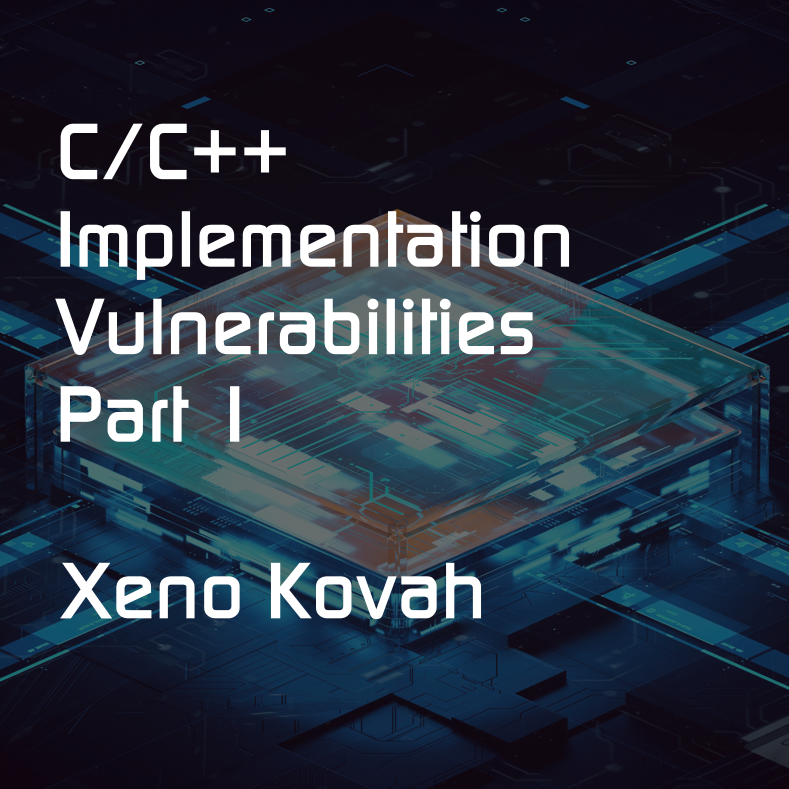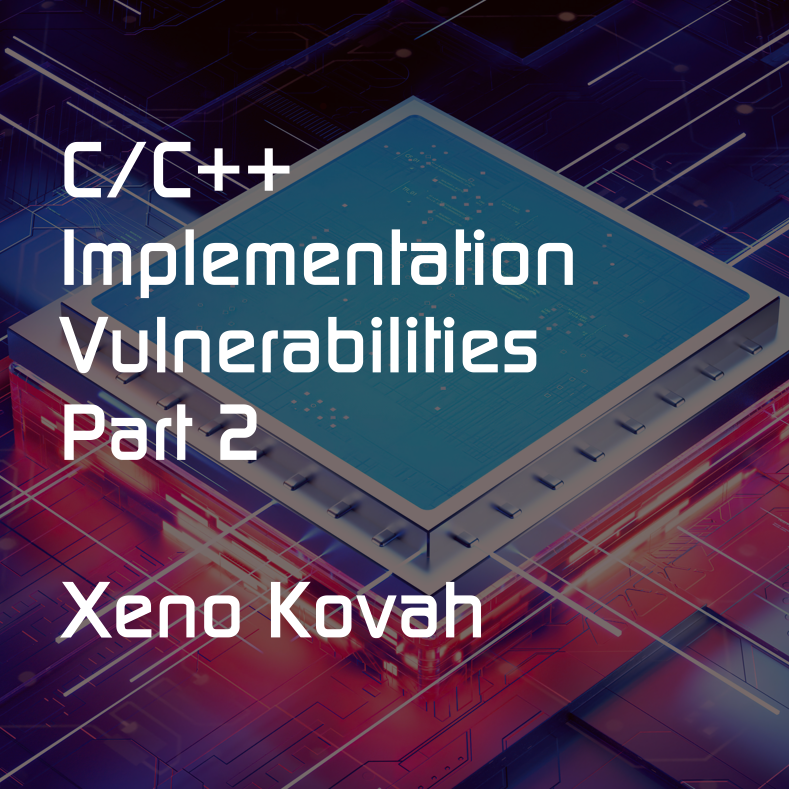
CanSecWest DOJOs
secwest.net DOJOs
Although no DOJOs are available for registration at this time, we’ve listed the ones we offered at the most recent secwest.net conference below to demonstrate the type of training and/or courses that we offer.
Black Belt Pentesting / Bug Hunting Millionaire: Mastering Web Attacks with Full-Stack Exploitation
Have you ever thought of hacking web applications for fun and profit? How about playing with authentic, award-winning security bugs identified in some of the greatest companies? If that sounds interesting, join this unique hands-on training!
I will discuss security bugs found in a number of bug bounty programs (including Google, Yahoo, Mozilla, Twitter and others). You will learn how bug hunters think and how to hunt for security bugs effectively.
To be successful in bug hunting, you need to go beyond automated scanners. If you are not afraid of going into detail and diving into full-stack exploitation, then this training is for you.
Watch 3 exclusive videos to feel the taste of this training:
Exploiting Race Conditions: https://www.youtube.com/watch?v=lLd9Y1r2dhM
Token Hijacking via PDF File: https://www.youtube.com/watch?v=AWplef1CyQs
Bypassing Content Security Policy: https://www.youtube.com/watch?v=tTK4SZXB734

Full-Stack Pentesting Laboratory: 100% Hands-On + Lifetime LAB Access. (3 DAY Version)
Modern IT systems are complex and it’s all about full-stack nowadays. To become a pentesting expert, you need to dive into full-stack exploitation and gain a lot of practical skills. That’s why I created the Full-Stack Pentesting Laboratory.
For each attack, vulnerability and technique presented in this training there is a lab exercise to help you master full-stack pentesting step by step. What’s more, when the training is over, you can take the complete lab environment home to hack again at your own pace.
I found security bugs in many companies including Google, Yahoo, Mozilla, Twitter and in this training I’ll share my experience with you. The content of this training has been carefully selected to cover the topics most frequently requested by professional penetration testers.

Windows Kernel Exploitation: Advanced
We will look into how we can bypass kASLR, kLFH, and do hands-on exploitation using data-only attack, which effectively bypasses SMEP and other exploit mitigations.
Upon completion of this training, participants will be able to learn:
Exploit development process in kernel mode
Mitigation bypasses
Pool internals & Feng-Shui
Arbitrary Read/Write primitive

Windows Kernel Exploitation: Foundation
In this course, we will use Windows 11 x64 for all the labs and has a CTF that runs throughout the training. This course starts with the basics of Windows & driver internals, different memory corruption classes, and fuzzing of kernel mode drivers.
Upon completion of this training, participants will be able to learn:
Basics of Windows and driver internals
Different memory corruption classes
Fuzz kernel mode drivers to find vulnerabilities
Exploit development process in kernel mode
Kernel debugging

Advanced Offensive GraphQL Security Training
Master GraphQL hacking from the authors who wrote Black Hat GraphQL. This (part 2) advanced hacking course builds on top of the foundational knowledge you gained about GraphQL internals in part 1. Leveraging a custom hacking lab, you’ll delve into the details of how to execute numerous GraphQL attacks such as:
Reconnaissance Techniques
Information Disclosure
Denial of Service Attacks
Authentication & Authorization Bypasses
Injection Exploits
Request Forgery & Hijacking
Cross-site request forgery
Server-side request forgery

Artificial Intelligence for Cybersecurity Professionals
In an era where cyber threats are increasingly sophisticated, the need for advanced defense mechanisms is paramount. This 2-day intensive course is designed for working professionals in the cybersecurity field, aiming to equip them with the knowledge and skills to leverage artificial intelligence (AI) in combating cyber threats. The course provides a comprehensive overview of AI technologies, focusing on their application in cybersecurity. Participants will gain insights into the latest AI tools and techniques used for threat detection, risk management, and response automation. Through a blend of theoretical knowledge and practical exercises, the course prepares professionals to effectively integrate AI into their cybersecurity strategies.

Beginner C2 with Sliver
Learn the ins and outs of using a command-and-controls (C2) for red team operations and learn how threat actors use C2s to gain access to computers and internal networks. During this course, we will create implants with Sliver, learn how to manage a C2 with multiple operators, persist in the target’s environment, pivot to other hosts, and steal valuable credentials. Course material will be accompanied by hands-on labs and a test network to familiarize yourself with the tools and practice the techniques.

Attacking and Defending Linux, Kubernetes and Docker
Learn how to attack and defend Kubernetes, Linux and containers from Jay Beale, the creator of Bastille Linux, the Center for Internet Security’s first Linux security benchmark, and two Kubernetes tools: the Peirates attack tool and the Bust-a-Kube CTF cluster. In this fully hands-on course, you’ll get access to our cloud training environment, where you’ll have a Kali Linux system filled with capture-the-flag (CTF) virtual machines and a Kubernetes cluster, which you will attack and defend.
This training focuses on giving you practical attack skills from real penetration tests, coupled with solid defenses to break attacks. Every single topic in the class has a long attack exercise, where you use Kali Linux to attack Kubernetes and containerized programs, and a matching short defense exercise, where you will use new skills to break that attack, confident that it will break other attacks. In this well-reviewed class, we attack the container orchestration system, Kubernetes, along with the Linux operating system and containers that make it up!
We begin with a technical introduction to Kubernetes and containers. We learn how to work with container runtimes, hands-on, and then learn the beginnings of container breakout. We then take a deep dive into Kubernetes security measures, starting with authorization, before our next lab: a multi-step Kubernetes cluster compromise. The class continues in this fashion: concepts, then attack, then defense. In all, there are 14 lab exercises, including MitM attacks, node compromises, and cluster-to-cloud-to-cluster compromise.
Our defense work will include: authorization settings, role-based access control, network policies, pod security standards, and the Kyverno admission controller. These will enable and enforce the powerful technologies we’ve learned: AppArmor, SecComp, and root capability dropping. We’ll see how both on-prem and cloud-based clusters can be attacked, attack our own clusters, and then harden those Kubernetes clusters to break our attacks.

Foundational GraphQL API Attack Surface Training
Learn about GraphQL hacking from the authors who wrote Black Hat GraphQL. This crash course into GraphQL will give you a hands-on approach to learning about how this rapidly adopted API technology works and how its internals can be used as attack vectors.
Basics of GraphQL communications, language and type system
Build your own GraphQL hacking lab with a vulnerable target server and popular GraphQL hacking utilities
Understand the basics of GraphQL vulnerabilities

x86-64 Assembly
This class teaches you how to disassemble binaries, read x86-64 assembly language, and debug black-box binaries in WinDbg and GDB. This knowledge of assembly is the fundamental skill which is required to learn reverse engineering and vulnerability exploitation. Reverse engineering is in turn a fundamental skill which is required for malware analysis and vulnerability hunting.

C/C++ Implementation Vulnerabilities Part 1
Dual-purpose class: This class teaches developers how to avoid writing implementation flaws, or detect ones that are already in their code...but it also teaches vulnerability-hunters how to find the flaws as well! So it's an epic battle between contentious developers and devious vulnerability hunters! Who will win?! Whoever most takes the lessons of this class to heart!
Over three-dozen CVE writeups!
This class serves as a prerequisite for a future class that will add examples on uninitialized data access, race conditions, use-after-free, type confusion, and information disclosure vulnerabilities.

Hunting the Adversary: Applying Cyber Threat Intelligence
Traditional security defence tools are increasingly unable to protect against emerging and current attacks. The modern attacker has adopted advanced tools and techniques that are unable to be stopped with traditional firewalls, intrusion detection and anti-virus. Meanwhile, dedicated attackers are attempting intrusions over months and years while going undetected to steal valuable information, trade secrets and financial information. Defence techniques that leverage information about attackers and their techniques, however, provide the ability to greatly enhance the security of an organization.
Modern defences can integrate intelligence and counterintelligence information which greatly increases the ability to keep attackers out and to detect their presence quickly. This course will teach students about the tools they can use to gain insight into attackers and to integrate them into their organization. This course will be a mix of lecture and hands-on training so students will be equipped on day one to go back to their work and start using threat intelligence to protect their networks.

x86-64 Intel Firmware Attack and Defense
This class is designed to give you all the background you need to understand how x86-64 firmware (aka UEFI BIOS) works, and what the most common security misconfigurations are. It will prepare you to be able to read and understand the existing attack and defense research in the space, taking an explicit walk through of the attack and defense moves and counter-moves threat tree. And as always, this classes teaches you to be comfortable with Reading The Fun Manual (RTFM!) to go seek out the most accurate details of how things work, and to see out new problems in new areas that no one's read yet with a security mindset.

C/C++ Implementation Vulnerabilities Part 2
Dual-purpose class: This class teaches developers how to avoid writing implementation flaws, or detect ones that are already in their code...but it also teaches vulnerability-hunters how to find the flaws as well! So it's an epic battle between contentious developers and devious vulnerability hunters! Who will win?! Whoever most takes the lessons of this class to heart!
Over three-dozen CVE writeups!
This class treats the material from C/C++ Implementation Vulnerabilities Part 1 as a prerequisite.

Xeno's All You Can Learn Buffet!
This is the combination class that lets you take any of the material(!) from the x86-64 Assembly, x86-64 OS Internals, x86-64 Intel Firmware Attack & Defense, C/C++ Implementation Vulnerabilities Part 1 and C/C++ Implementation Vulnerabilities Part 2 classes at your own pace, but with full instructor support.

RISC-V Assembly
RISC-V is the new hotness! It's going to take over the world! (Or is it? It is!) But what is RISC-V, and why should you care?
RISC-V is an open source Instruction Set Architecture (ISA). Or, in reality, a small, tight-nit family of ISAs and ISA extensions. The multiple ISAs allow it to be modular and be cut down to work for a 32-bit embedded system, or scaled up for a 64-bit desktop system.
But it's the open-source aspect of RISC-V which is what will make it take over. In a world where many embedded device makers use ARM ISAs, but have to pay ARM a licensing fee, what company wouldn't want to investigate making their chips without paying licensing fees to ARM, or Tensilica, or others? E.g. in 2022 Espresiff indicated they'll be using RISC-V exclusively for all future chips. So in the same way that Linux found some clearly beneficial early niches, and kept expanding from there, RISC-V has begun to find its niches, and natural market forces will cause it to continue expand.
This class teaches you how to disassemble binaries, read RISC-V assembly language, and debug black-box binaries in GDB. This knowledge of assembly is the fundamental skill which is required to learn reverse engineering and vulnerability exploitation. Reverse engineering is in turn a fundamental skill which is required for malware analysis and vulnerability hunting.

x86-64 OS Internals
This class teaches you about the fundamental hardware mechanisms which all operating systems, virtualization systems, and firmware *must* interact with in order to run successfully on x86 hardware. For instance it teaches you what an OS, virtualization, or firmware must do to separate user code (ring 3) from kernel code (ring 0). Or how they can enforce non-executable memory to make vulnerability exploitation more difficult. This is taught in a *mostly* OS-agnostic way focusing on Intel-isms rather than OS-isms (albeit with using Windows as reinforcement, thanks to its excellent kernel-level debugging support.) This class also teaches you to be comfortable with Reading The Fun Manual (RTFM!) to give you self-sufficiency when seeking out the most accurate details of how things work.


